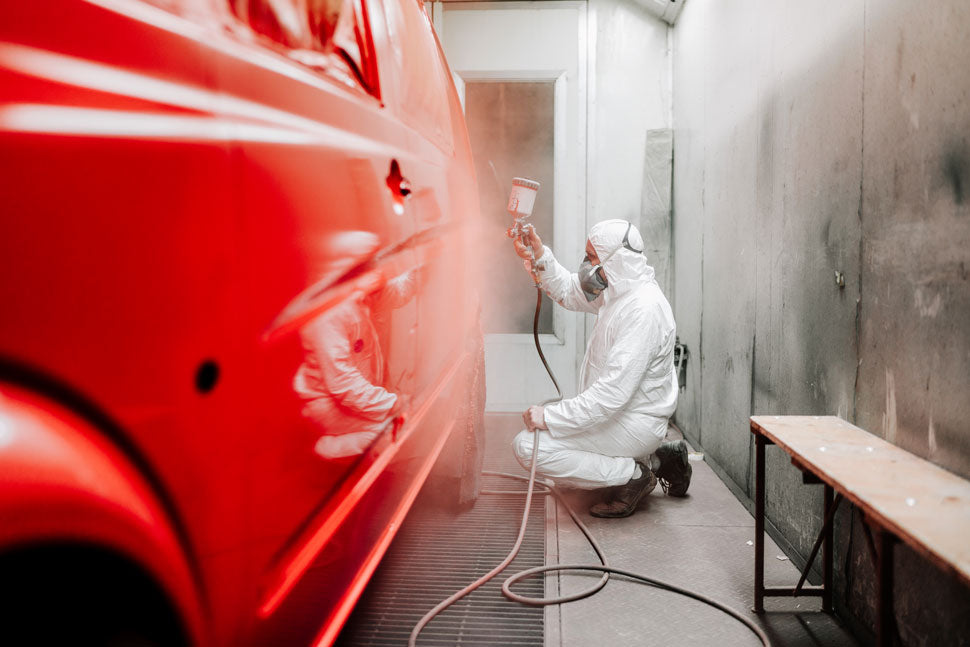How To Mix Car Paint For A Flawless Finish

Achieving a flawless finish on your car's paint job is both an art and a science. It requires precision, patience, and the right techniques. One of the most critical steps in this process is mixing the paint correctly. In this guide, we'll walk you through the essential steps on how to mix car paint to ensure a smooth and even application.
Understanding the Basics of Car Paint
Before diving into the mixing process, it's important to understand the components of car paint. Automotive paint typically consists of a basecoat (the color), a reducer (to thin the paint), and a hardener (to help the paint cure and harden). The ratio of these components is crucial for a successful paint job.
Choosing the Right Equipment
To mix car paint effectively, you'll need the right equipment. A clean, dust-free environment is essential to prevent contamination. You'll also need a mixing cup with measurement markings, a stir stick, and a paint strainer. Ensure all tools are clean and free from any residue from previous uses.
Mixing the Paint
- Measure Accurately: Use the mixing cup to measure the paint, reducer, and hardener according to the manufacturer's recommendations. The most common ratios are 4:1:1 or 2:1:1 (paint: reducer: hardener), but this can vary.
- Add the Reducer: Pour the reducer into the mixing cup first. The reducer helps thin the paint, making it easier to apply and ensuring it flows smoothly through the spray gun.
- Add the Basecoat: Next, add the basecoat to the reducer. The basecoat is the actual color of the paint.
- Add the Hardener: Finally, add the hardener to the mixture. The hardener is crucial for ensuring the paint dries and cures properly.
- Mix Thoroughly: Use the stir stick to mix the components thoroughly. Ensure that the mixture is homogeneous, with no streaks or clumps.
- Strain the Paint: Once mixed, strain the paint through a paint strainer to remove any impurities or lumps. This step is crucial for a smooth finish.
Testing the Mixture
Before applying the paint to your car, it's important to test the mixture. Use a spray gun to apply the paint to a test panel or a hidden area of the car. This will allow you to check the color match and the consistency of the paint. If the paint seems too thick or too thin, adjust the mixture accordingly.
Applying the Paint
After ensuring the paint mixture meets your satisfaction, you can proceed to apply it to your vehicle. Make sure to work in an area with good ventilation and wear suitable protective equipment. Apply the paint in uniform, thin layers, allowing each layer to dry thoroughly before adding the next one.
Tips for a Flawless Finish
- Temperature Matters: The temperature of your workspace can affect the paint's consistency. Aim for a temperature between 65°F and 75°F for optimal results.
- Avoid Overmixing: While thorough mixing is essential, overmixing can introduce air bubbles into the paint, leading to an uneven finish.
- Practice Patience: Don't rush the drying process. Allow ample time for each coat to dry before applying the next.
- Use Quality Materials: Investing in high-quality paint, reducers, and hardeners can make a significant difference in the final result.
Mixing car paint for a flawless finish requires attention to detail and adherence to the correct ratios and techniques. By following these steps and tips, you can achieve a professional-looking paint job that will enhance the appearance and value of your vehicle. Remember, practice makes perfect, so don't be discouraged if your first attempt isn't perfect. With patience and persistence, you'll master the art of mixing car paint.
